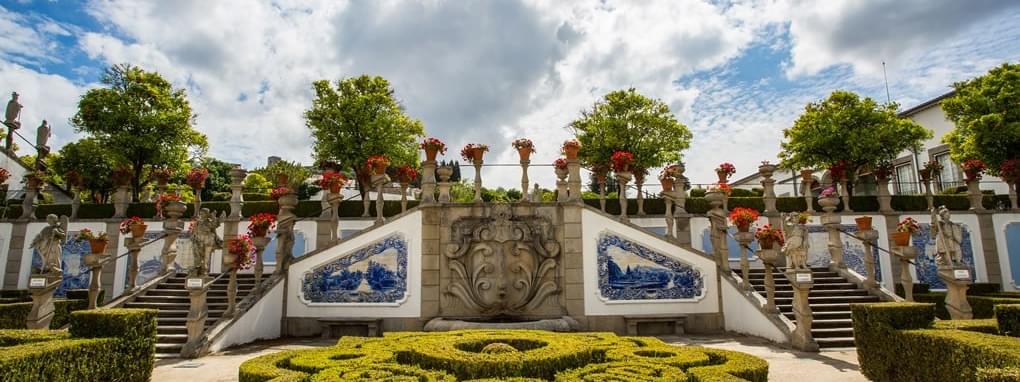The Garden of the Bishop’s Palace in Castelo Branco is one of the most original examples of the Baroque in Portugal!
It was the Bishop of Guarda, D. João de Mendonça (1711-1736) who commissioned the work and probably led the works in the garden. This beautiful Baroque garden, rectangular in shape, is dominated by balconies and verandas with iron guards and stone balusters. It has five lakes with ornamented edges upon on which are mounted sets of water.
In formal terms the Garden is divided into four different places, but connected by several points of articulation: the entry, the bushes, the flooded garden and the upper plan. Since 1936, the entry to the garden is made through the street Rua Bartolomeu da Costa. The design followed the spirit of place, namely the flowerbeds or the monumental staircase leading to the upper level.
The rectangular bush level is the main level of the garden and it is divided into 24 areas limited by hedges of bushes. Here you will find, in an allusion to the five wounds of Christ, five lakes with fountains. This is also where we find the Steps of the Kings, amazing fountains and water games. Among the elegant bush beds of fine cut, stand symbolic statues of granite, representing the New Men, the Four Cardinal Virtues, the Three Theological Virtues, the Zodiac, the Parties of the World, the Four Seasons, Fire and Hunting.
Arranged in the manner of staircase, there are representations of the Apostles and the Kings of Portugal until D. José I. The flooded garden is contiguous to the previous one, as if emerging from a lake. We reach the upper level of the garden through the west side staircase, where we find statues depicting the Old Testament and the water as a symbol of a purifying element.
Location
Google Maps
Francisco Tavares Proença Júnior Museum
Francisco Tavares Proença Júnior Museum is, without a doubt, an excellent starting point to discover the city and the region of Castelo Branco.
Founded in 1910, the basis of this museum is the archaeological collection of Francisco Tavares Proença Júnior, but it has been increased with ancient art pieces from the Episcopal Palace collection and continual additions from archaeological collections, religious garments and embroidered bedspreads from the Vilhena collections. This is, quintessentially, the place where you can re-experience the origins and History of this Beirã city.
Location
Google Maps
Social media
Facebook




